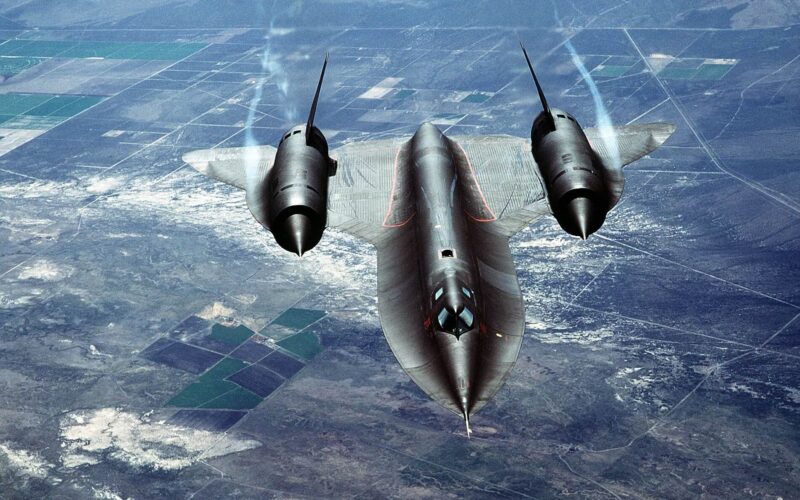Can you imagine flying around the world in less than 12 hours? The remarkable project of the Lockheed Corporation made it possible, with the fastest aircraft in the world to this day.
During the Cold War, the Central Intelligence Agency (CIA) demanded to develop a reconnaissance plane that could fly above 27,000 meters at high speed, since the Soviet Union detected its previous U-2.
This titanium-skinned Blackbird that mostly reminds of a spaceship rather than a spy plane still holds a couple of world’s records in aviation until today.
Early start for Lockheed Blackbird
The SR-71 Blackbird is a high-altitude, long-range, stealth spy plane, which was developed by the Lockheed Corporation.
In 1957, the CIA requested the Lockheed Corporation, an American aviation company, to design a stealth spy aircraft. CIA desired to develop an even faster aircraft than the U-2, also known as a Dragon Lady, which could reach the speed up to 805 kilometers per hour.
Until 1960, Lockheed prepared multiple aircraft project drafts, which included the A-10 and A-12. Even though A-12 seemed to fit all requirements for a stealth spy aircraft, its performances were insufficient to counter the Soviet air defenses. Thus, Lockheed engineers worked on an improved version. That was the introduction of the SR-71 Blackbird project, operated by NASA and the U.S. Air Force (USAF).
Design of an uncatchable aircraft
While designing the Blackbird, engineers faced many different challenges, from the design of unique aircraft shapes, using rare materials, and the creation of the right color combination to make this aircraft stealthy.
Averagely, the exterior temperature of the Blackbird could reach from 239 to 328°C. For this reason, it was necessary to use titanium as the primary structural material for the aircraft.
The SR-71 was painted in a dark blue color to create a camouflage effect while flying in the night time. The combination of dark colors helped to absorb radar signals and to radiate some of the enormous airframe heat caused by air friction. It gave the aircraft its name – Blackbird.
The production and specialties of the SR-71
While developing the SR-71 Blackbird, engineers tried to create an aircraft, which can reach the highest speed records and even be faster than previous models of U–2 and A–12.
Since the spy aircraft operated at extreme altitude and speed, pilots needed to wear special pressure suits, which made them look more like astronauts than pilots. The suits of pilots helped to cope with the low atmospheric pressure and lack of oxygen while reaching high altitudes.
The spy planes were powered by the first adaptive engines in the world – Pratt and Whitney J58 axial turbojets. Engines were able to cope with sustained flights even above Mach 3. This type of engine was first developed in 1958.
The Blackbird required an enormous amount of titanium for its construction. Since the spy plane was top-secret, the CIA set up several fake companies to buy a large amount of this metal without any suspicions.
Breaking the records in aviation
During the Cold War, SR-71 Blackbirds broke two aviation records, including the record for speed and elevation. In 1976, the Lockheed SR-71 reached the world’s record for sustained altitude in horizontal flight at 25,929 meters. The aircraft also broke the speed record by reaching 3,529.6 kilometers per hour. Can you imagine flying from New York to London in less than two hours? With SR-71 you could make it in 1 hour 54 minutes.
What holds behind the retirement of the uncatchable spy plane?
From its maiden flight in 1964, the Blackbird was operated by the USAF until 1998 and by NASA until 1999. The project of Blackbird required an enormous budget for both USAF and NASA.
After 1996, USAF struggled to get suitable funding to continue the production of the SR-71. In 1998, the USAF officially retired the spy plane. On the other hand, NASA still kept two Blackbirds, which continued to operate until 1999. After a mentioned year, all of the SR-71s were moved to aviation museums and used as an exhibition object.

